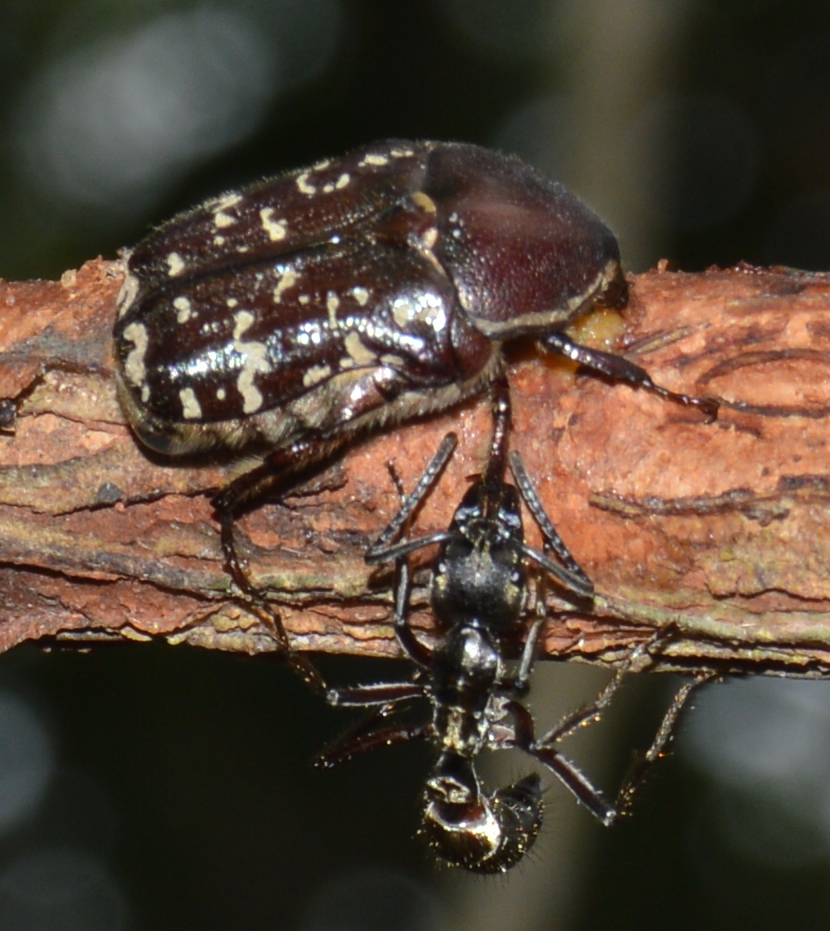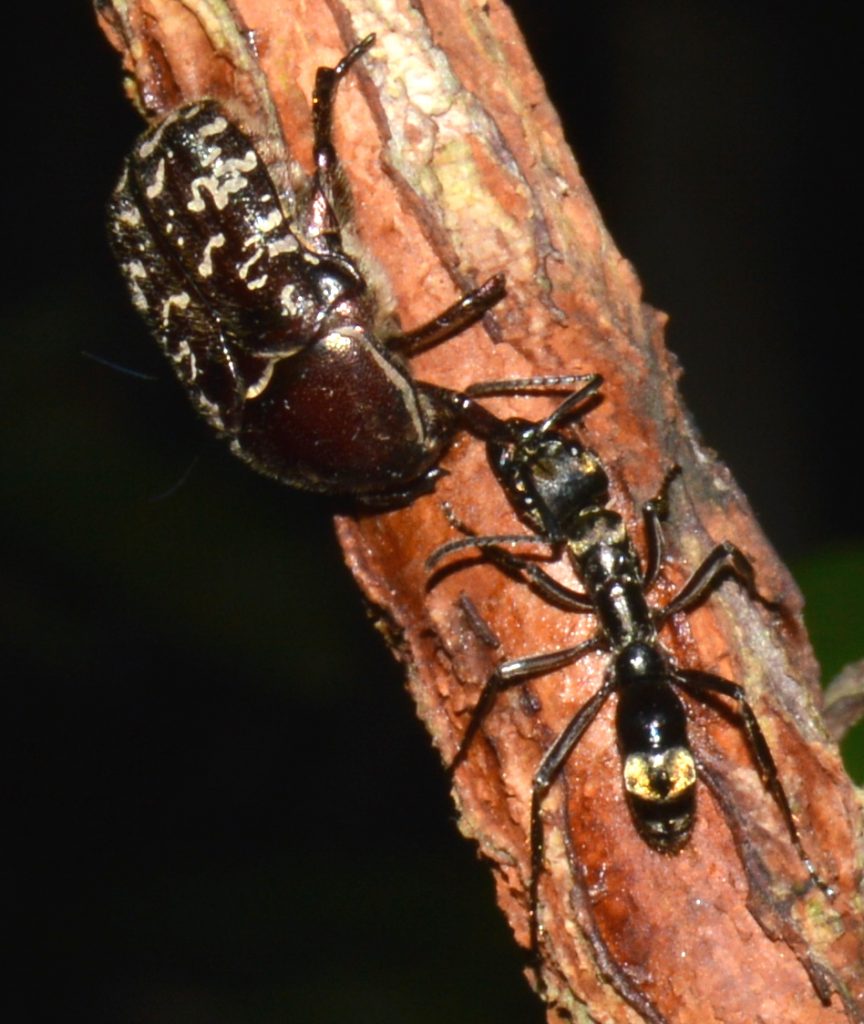Drunkenness and the happy medium that isn't entirely
Contents
So how does coming for a good meal result in some animals getting thoroughly sloshed? I suspect that most of the opportunities for animals that only opportunistically take advantage of fermenting fruits and saps are of limited quantity and duration. Consequently, there may have been very little natural selection for resistance to the negative effects of alcohol in the evolutionary lineages of these animals. What Waterston then observed occurs when the source of fermenting organisms is superabundant and/or long-lived.
As I mentioned before, what my daughter and I observed didn’t come anything close to what Waterston observed. But as I also mentioned, butterflies of many species let me approach them much more closely than they had before or since.
So is it possible that the insects that my daughter I watched weren’t inebriated but had instead chanced on that happy level of drinking well in advance of sloppy drunk that in humans allows so many to open and socialize even with complete strangers? In particular, could it explain apparently placid interactions between predators and prey?
Before preceding, fair disclosure requires a few photos showing interactions were not always totally convivial
and some of the flies definitely scattered when paper wasps initially appeared.
While the photos above show the ants being aggressive, it seemed more in the sense of obtaining access to alcoholic flux than predatory attack. Despite both Neoponera ants and paper wasps being well-documented predators who feed their offspring meat, neither showed any inclination toward preying on their neighbors.
Many ants, including members of the genus Neoponera,[30] and very likely all paper wasps[31] collect sugary solutions in such forms as nectar, extrafloral nectar, and insect honeydew. They use these as sources of energy. Certain predatory ants even turn off their predatory behavior and tend honeydew producing insects. Also, as dietary needs change, some ant species respond by changing their dietary preferences.[32] Much less is known about food choice and feeding behavior in paper wasps.
As predators, Neoponera ants and paper wasps shouldn’t be lacking for any essential nutrients. Were they instead focusing on collecting sugars that might also be in the alcoholic flux? Or could it be that this alcohol flux was such a rich source of essential nutrients that it was more optimal to single-mindedly focus on collecting it rather than mix its collection with insect prey? Much more would need to be done to determine whether these predatory animals’ passive behavior was a result of these reasons or the sedating effect of alcohol.


